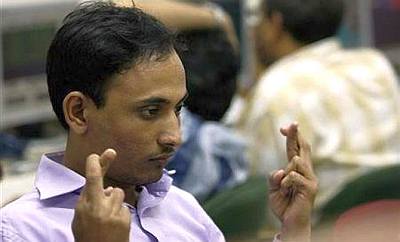 Retains projections for GDP growth at 7.5% for current financial year
Retains projections for GDP growth at 7.5% for current financial year
Unlike other multi-lateral institutions, the World Bank does not think that the environment affecting India’s economic performance has worsened on a net basis as it on Thursday retained the projections for GDP growth at 7.5 per cent for FY16 despite the first quarter delivering just seven per cent expansion.
Other institutions and rating agencies -- such as International Monetary Fund, Asian Development Bank, India Ratings -- have cut their initial forecasts in this respect.
In fact, Ind-Ra on Thursday itself slashed its prediction for the country’s economic growth rate to 7.5 per cent from earlier 7.7 per cent.
Even the finance ministry does not seem to be as gung-ho over the growth prospects as it was earlier.
The Economic Survey had forecast growth to be 8.1-8.5 per cent this financial year, but now key officials say the expansion could be in the range of 7.5-8 per cent.
Officially, the ministry is yet to revise the growth rate.
However, the World Bank did not think that eight per cent growth rate would come up even in 2017-18, as it said GDP growth would pick up to 7.8 per cent next year and 7.9 per cent in 2017-18.
When asked as to why the Bank did not cut its earlier projections, its country director Onno Ruhl told a press conference that key positive factors and negative ones about India’s economy balance each other out.
For instance, he said one of the key positive factor is that government has stepped up its capital expenditure, but negative development is that external environment has worsened.
In its India Development Update, the Bank said while public investments have helped kick-start the investment cycle, increased participation of private sector will be required going forward.
According to the Controller General of Accounts, government’s capital expenditure rose 18.6 per cent at Rs 91,938 crore (Rs 919.38 billion) in the first five months of the current financial year against Rs 77,499 crore (Rs 774.99 billion) in the same period a year-ago.
The rise was seen after two years of capital squeeze.
On external environment, the update said although India may be able to achieve fast GDP growth without export growth for a short period, sustaining high rates of GDP growth over a longer period will require a recovery of export growth.
India’s merchandise exports fell for the 10th consecutive month in September this year, longer than what was witnessed in even 2008-09 global financial meltdown.
Exports contracted 24.3 per cent, the steepest in 75 months, to $21.84 billion in September, against $28.86 billion in September 2014.
On the other hand, Ind-Ra cut the growth rate primarily due to the lower agricultural growth caused by a deficient rainfall.
It said although investment is showing the signs of incipient recovery, a full blown investment recovery will take anywhere between 12-18 months.
In fact, the World Bank also said that economic growth will pick up to 7.8 per cent in 2016-17 and 7.9 per cent in 2017-18.
However, acceleration in growth is conditional on the growth rate of investment picking up to 8.8 per cent during this period.
Update expressed concern over the balance sheets of the banking sector.
“The poor and deteriorating asset quality of public sector banks is the biggest challenge facing the financial sector and a drag on credit growth,” Frederico Gil Sander, senior country economist with World Bank said.
World Bank suggested reforms in infrastructure sector, especially power and roads, to clear bank funds stuck up there.
WHAT WORLD BANK SAYS
- Low inflation creates room for monetary policy easing
- Current account deficit to inch up to 1.4% of GDP in FY16 from 1.3% in FY15
- States now responsible for 57% of spending (16% of GDP) against 46% in FY11
- Direct tax base narrow, contributes 5.7% of GDP against 11.2% in Russia and 11.4 % in OECD (average)
- Indirect tax base reasonable, contributing 11.4% of GDP against 16.4% in Russia and 10.8% in OECD (average)
- Suggests bringing in alcohol, electricity, and real estate under proposed GST
- Joining bigger regional trade agreement such as Regional Comprehensive Economic Partnership to serve India’s interests
- Both manufacturing and services need to create jobs
Image: A market trader reacts. Photograph: Reuters









